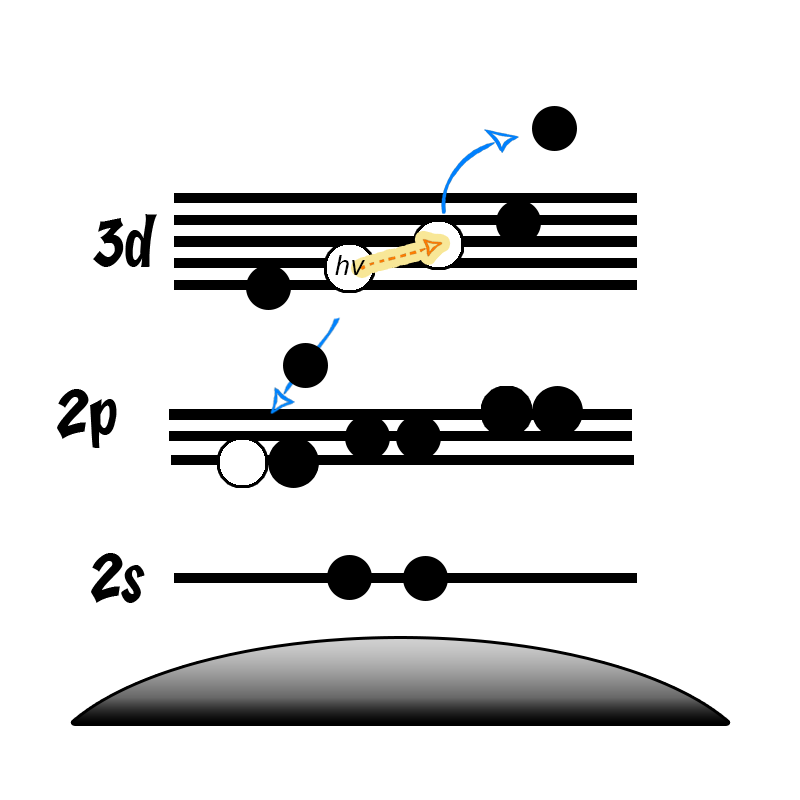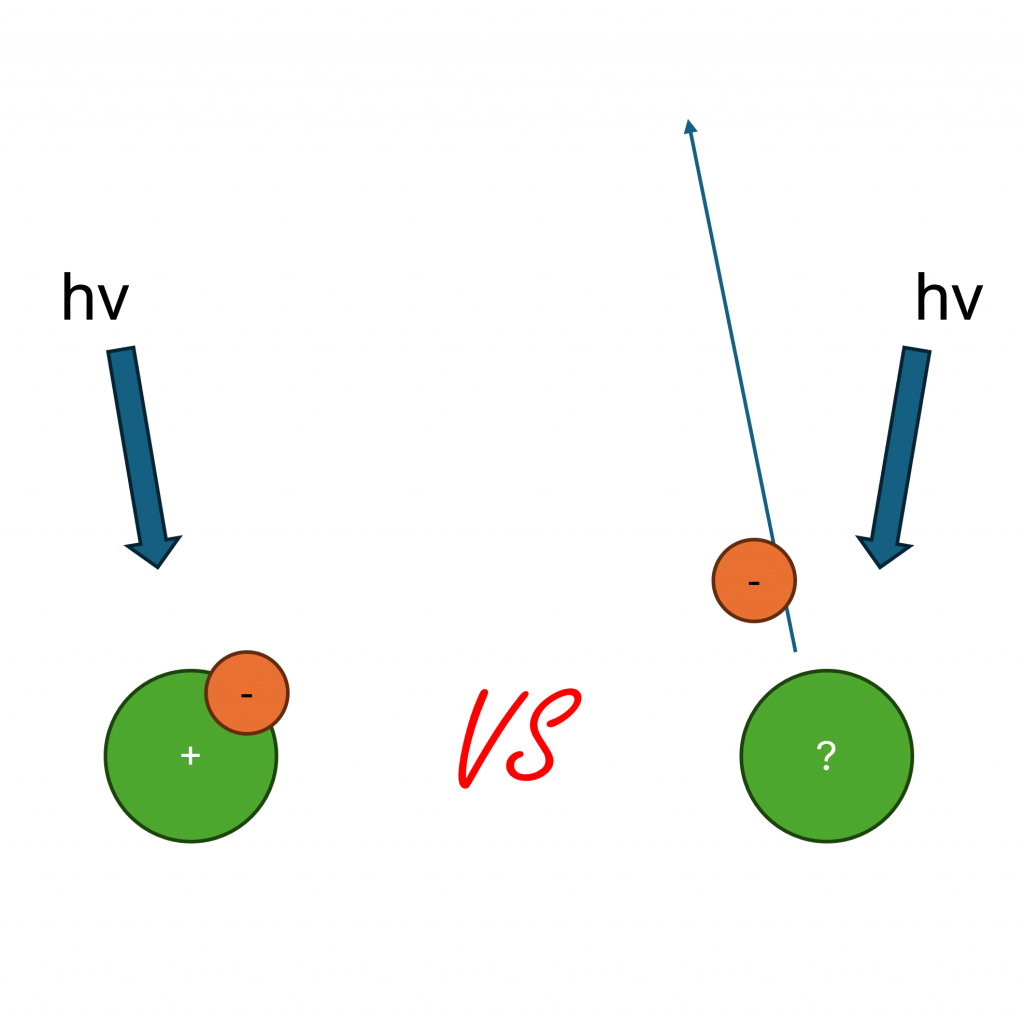In XPS, this process manifests itself as a difference in the peak width of two spin-orbit doublet peaks and is essentially exclusively observed in the 2p spectra of the first row transition metals. These orbitals are affected by the L2L3M45 Coster-Kronig process. In first row transition metals, the very rapid L2L3M45 CK process causes the 2p1/2 peak to broaden, due to a decreased lifetime in the 2p1/2 core-hole compared with the 2p3/2 (Figure 2).

Peak width is related to core-hole lifetime (τ) by equation 1, where Γ is the corehole lifetime broadening or natural linewidth in eV.(4)
Γ = ћ/τ Equation 1
This contributes a Lorentzian function to the peak via equation 2, where I(E) is the intensity at energy E, ED is the center of the Lorentzian peak and so as τ decreases, peak width increases.
I(E) = I(E0) Γ2 / {(E – E0) + Γ2} Equation 2
The FRTM 2p broadening increase with atomic number from Ti to Co/Ni, and then decrease dramatically for Cu and Zn with amount of broadening related to released electron kinetic energy. The peak broadening (2Γ) decreases with increasing angular momentum quantum number (L1 > L2 > L3) and is in agreement with the observation that the ratio of auger intensity L3M45M45:L2M45M45 is higher than the population density of L3:L2 (2:1 – see spin orbit coupling) due to L2M45M45 competing with the Coster-Kronig process L2L3M45 for the L2 core-hole. L2M45M45 is energetically forbidden for Z > 31 due to the binding energy of M45 being insufficient to overcome the energy difference between L2 and L3 and hence no asymmetric peak broadening is observed for the 2p peaks from Gallium onwards.
Super Coster-Kronig processes are uncommon, but can be observed for the 4p orbitals of Nb-Rh due to the N2N3N45 super CK process,(1) though since these are minor photoemission peaks for standard XPS analysis this is rarely a cause for concern in data analysis.




